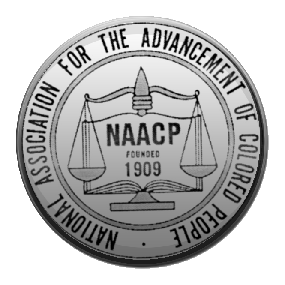
From The Chicago Sun-Times…
NAACP makes unprecedented diversity push
By Russell Contreras
The NAACP’s newly revived Worcester, Mass., chapter elected a 28-year-old openly gay black man as its president this month. In New Jersey, a branch of the organization outside Atlantic City chose a Honduran immigrant to lead it last year. And in Mississippi, the Jackson State University chapter recently turned to a 30-something white man.
Founded more than a century ago to promote black equality, the National Association for the Advancement of Colored People is seeing remarkable diversity in its leadership ranks — the result of an aggressive effort over the last four or five years to boost NAACP membership and broaden the civil rights organization’s agenda to confront prejudice in its many forms.
“This is the new NAACP,” said Clark University political science professor Ravi Perry, the new chapter president in Worcester. “This is a human rights organization, and we have an obligation to fight discrimination at all levels.”
NAACP branches have been recruiting gays, immigrants and young people who grew up in a world far removed from the landmark 1954 Brown vs. Board of Education ruling that outlawed school segregation. Now, leadership positions that were once held only by blacks are being filled by members of other racial or ethnic groups.
The group does not keep track of numbers, but in recent years NAACP chapters in New Jersey, Connecticut and Georgia have elected Hispanics as president. A white man was picked to lead the chapter in Aiken, S.C. And two years ago, NAACP members in Hamtramck, Mich., a Detroit suburb, selected a Bangladeshi American to revive their long-dormant chapter.
“Some people mentioned that it wouldn’t be possible for me to be president,” said Victor Diaz, 32, a Dominican American who ran against an incumbent and was elected president of the Waterbury, Conn., branch in November. “But when I ran, I won 3 to 1.”
The push for diversity troubles some members of the NAACP’s old guard, who worry that problems in the black community may get short shrift. But some social scientists say the new diversity is merely a return to the group’s roots as a biracial organization.
In 1964, the NAACP’s membership peaked at 625,000 paid members. By the middle of the last decade, that had dropped to just under 300,000. Now it has reversed course and climbed to more than 525,000, in large part because of an increase in young members, group officials say. The NAACP said it does not keep track of the organization’s racial and ethnic breakdown.
Stefanie Brown, the NAACP’s 30-year-old national field director, said the under-25 crowd is the organization’s fastest-growing age group. In fact, the NAACP has slots on its 60-plus member board of directors reserved for people under 25. In addition, Brown said, young professionals under 40 are taking leadership roles — something that hadn’t happened until recently.
Some in the group say the diversity push weakens the NAACP’s identity. Jamarhl Crawford, editor of the Blackstonian, a Boston website that covers the city’s black population, said he fears it could “water down” the focus on problems in the black community.
“I think there’s going to be some loss there in terms of actual activism, actual protest” on behalf of blacks, said Crawford, a 40-year-old member of the NAACP’s Boston branch.
The diversity push was started a few years ago under then-NAACP chairman Julian Bond. Later, Benjamin Todd Jealous, who in 2008 became the group’s youngest leader at age 35, ramped up the effort and also urged the organization to take up gay rights.
“At our core, we want to end discrimination and have equality for all people,” Brown said.

1 comment:
Yet several more reasons why the NAACP seems irrelevant to young blacks today.
Post a Comment